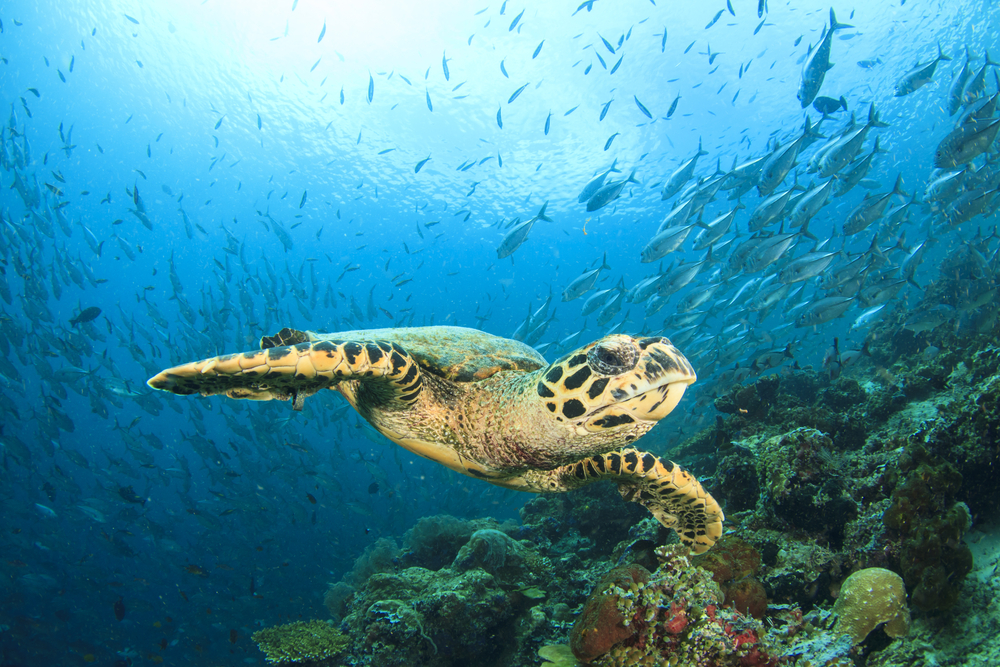Dropping by Changi Beach or East Coast Park for your weekly cycling or picnic outings? You might chance upon adult sea turtles at these beaches! As much as they might be adorable and fascinating to watch, please do not disturb them, since these turtles might be nesting their eggs!
Between June and September each year, female hawksbill or green turtles would come onto the shores of some of our locals beaches in Singapore to lay their eggs, despite Singapore’s high rate of urbanisation and busy waters. These eggs typically hatch after about two months, and during these enduring two months, the turtle eggs are particularly vulnerable to external threats such as animal predators and human actions.

Hawksbill turtles (Chelonia mydas) are named after their narrow, pointed beak, and would typically grow up 90 centimetres. Their jaws are used to crunch crabs and shells, though it mainly eats sponges and other animals. Hawksbill turtles are classified as critically endangered by the International Union for Conservation of Nature (IUCN). They are said to be the most endangered of the seven species of sea turtle, with only approximately 8,000 nesting females left globally.
One the other hand, green turtles (Eretmochelys imbricata) can measure up to around 1.5 metres or more! They are one of the largest sea turtles and the only herbivore among the different turtle species. Green turtles get their names from the colour of the cartilage and fat deposits around their internal organs. Adults would mainly feed on only seagrasses, while the juveniles eat seaweeds, crabs and squid. Green turtles are classified as endangered by the IUCN.
These turtles and their eggs are particularly vulnerable while they are in their nesting state. The turtle eggs may be preyed upon by animals such as monitor lizards, eagles, or even termite pests. Even plant roots can break through the egg shells and suck up their nutrients and moisture.
And even if the eggs do survive the two months incubation period, the hatchlings are still vulnerable to predators and accidents. Since hatchlings are attracted to light sources (their natural instincts would tell them to crawl towards moonlight or starlight on the water), they might end up crawling inland instead of towards the sea. Some hatchlings were sighted crawling onto foot paths and cycling tracks towards street lights, which endangers their safety.
There has been more and more turtles and nest sightings in the recent years in Singapore. Local authorities and organisations such as the National Parks Board (NParks) has been working on creating a safer environment for these eggs, hatchlings and turtles. The protected Sisters’ Islands Marine Park also helps increasing the eggs and hatchlings’ chances of survival.
So, what should you do if you encounter these turtles nests at Singapore beaches?
-
- Speak softly! Loud voices or noises can scare the little hatchlings.
- Contact the NParks helpline at 1800 471 7300 to report your sighting, so that they can tend to the nests and take care of their safety.
- Refrain from using lights and flash photography as it will scare the turtle and hatchlings too! It can even cause a nesting turtle to leave without laying any eggs.
- Keep a distance and avoid touching the nest.
- Keep clear of tracks left by nesting turtles and researchers will use the tracks to identify the species of the turtle and to locate the nest.
- And of course: Do not collect the hatchlings or any eggs! Not is it only does it hurt the hatchlings and eggs, it is also considered an offence under the Wildlife Act, which makes it illegal to do so.
Lastly, even if you do not spot any nesting turtles while you’re visiting the local beaches, you can still help to create a safe and conducive environment for the turtles to nest by not littering and picking up litters at the beach! We can all play our part by being conscious of plastic pollution and cutting down on the usage of single-use plastics.